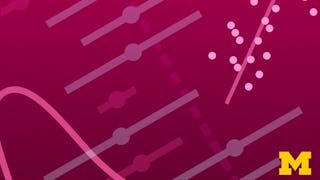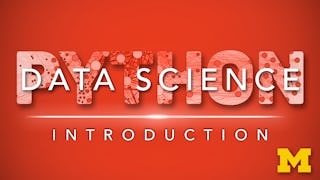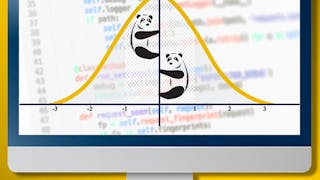This course introduces Python programming and fundamental statistics concepts, equipping learners with essential skills for data-driven roles in tech and AI. Through hands-on experience, you'll learn how to manipulate data, visualize insights, and apply statistical techniques for data analysis.


您将学到什么
Write Python programs using core concepts like variables, data types, and control flow.
Apply NumPy and Pandas to manipulate and analyze data efficiently.
Create insightful data visualizations using Matplotlib, Seaborn, and Plotly for effective reporting.
Perform statistical analysis and probability tests to solve data-driven problems and validate hypotheses.
您将获得的技能
- NumPy
- Probability Distribution
- Python Programming
- Pandas (Python Package)
- Seaborn
- Statistical Hypothesis Testing
- Matplotlib
- Descriptive Statistics
- Plotly
- Programming Principles
- Data Science
- Probability & Statistics
- Statistical Analysis
- Data Visualization
- Statistics
- Data Analysis
- Data Visualization Software
- Exploratory Data Analysis
要了解的详细信息

添加到您的领英档案
16 项作业
了解顶级公司的员工如何掌握热门技能

积累特定领域的专业知识
- 向行业专家学习新概念
- 获得对主题或工具的基础理解
- 通过实践项目培养工作相关技能
- 获得可共享的职业证书

该课程共有4个模块
Welcome to Python and Statistics Foundations, the first course in the AI Exploration program's series! This module is designed to help learners take a significant step towards launching their careers in tech. In the first week, we'll explore how Python programming concepts are essential for creating efficient programs. Let's get started!
涵盖的内容
25个视频7篇阅读材料5个作业1个讨论话题1个插件
In the second week of this course, Learn how to manipulate data using NumPy and Pandas, working with various data formats. Gain proficiency in visualizing data using a range of charts and graphics.
涵盖的内容
26个视频4篇阅读材料5个作业1个讨论话题
In the third week of this course, we'll delve into statistics and probability. We'll explore measures of central tendency to handle various data inconsistencies. Additionally, we'll cover topics such as joint and marginal probability, as well as the fundamentals of hypothesis testing.
涵盖的内容
20个视频3篇阅读材料5个作业
This module is designed to assess an individual on the various concepts and teachings covered in this course. Evaluate your knowledge with a comprehensive graded quiz on Python programming concepts, Data manipulation with NumPy and Pandas with Statistical Analysis
涵盖的内容
1个视频1篇阅读材料1个作业1个讨论话题1个插件
获得职业证书
将此证书添加到您的 LinkedIn 个人资料、简历或履历中。在社交媒体和绩效考核中分享。
从 Data Analysis 浏览更多内容
 状态:免费试用
状态:免费试用University of Michigan
 状态:免费试用
状态:免费试用University of Michigan
 状态:免费试用
状态:免费试用 状态:免费试用
状态:免费试用University of Michigan
人们为什么选择 Coursera 来帮助自己实现职业发展




常见问题
This course provides an introduction to Python programming and essential statistical concepts. Designed for Python enthusiasts, it emphasizes practical skills for data manipulation and analysis, enabling learners to tackle real-world data challenges.
Learners will explore Python fundamentals, harness libraries like NumPy and Pandas for efficient data handling, and utilize visualization tools such as Matplotlib, Seaborn, and Plotly to present their findings. Additionally, the course covers key statistical methods and probability theory, equipping you with the tools to make data-driven decisions.
By the end of the course, you'll be well-prepared to apply these skills in various data analysis scenarios, setting a foundation for further studies in data science and artificial intelligence.
This course is designed for:
- Freshers looking to enter the fields of data analysis, data science, or artificial intelligence.
- Individuals with a keen interest in programming and statistics who want to enhance their technical skills.
- Professionals seeking to upskill in Python and data manipulation for practical applications in their careers.
- Anyone curious about data and eager to learn how to analyze and visualize it effectively.
Whether you're starting your tech journey or looking to build a strong foundation, this course will guide you through the essentials of Python and statistics.
The Python and Statistics Foundations course spans approximately 15 hours in total and is designed to be completed at a pace of 3-4 hours per week. This allows learners to absorb the material effectively while balancing other commitments.
更多问题
提供助学金,


 中
中

